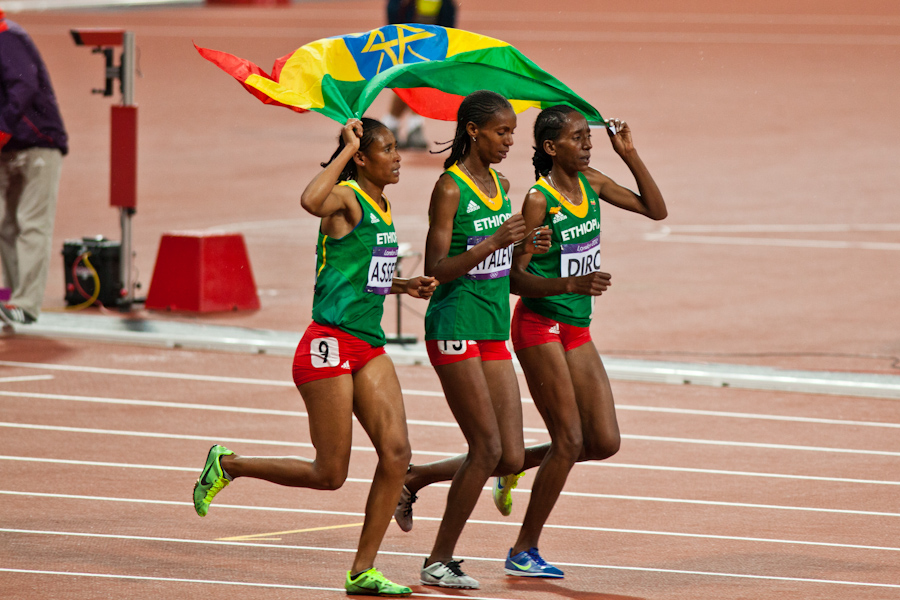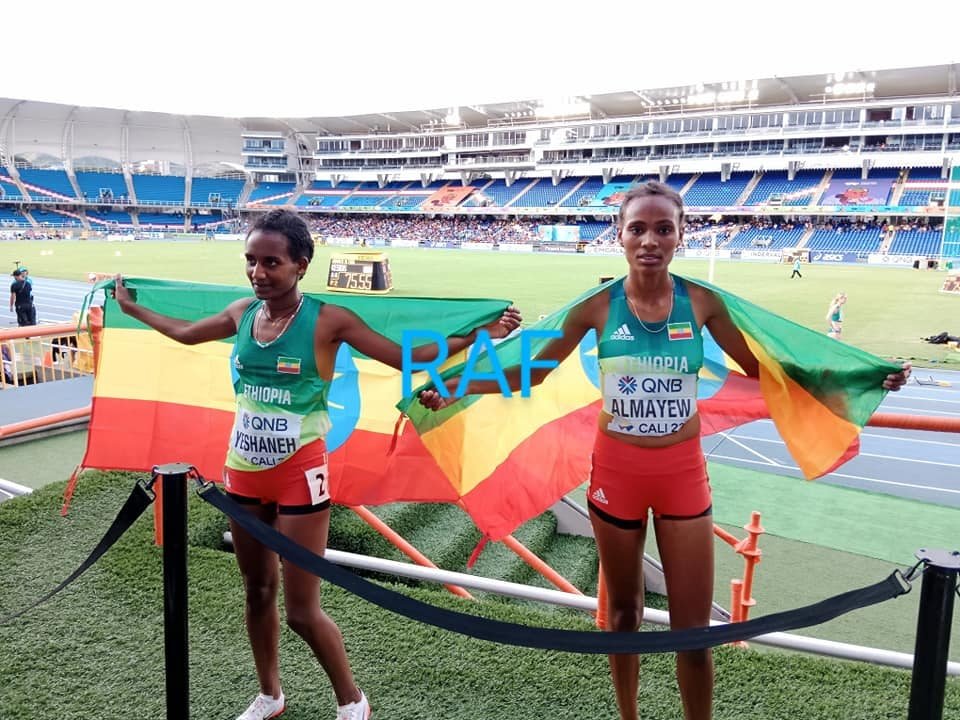Historical Context of Ethiopian Steeplechase Success

The dominance of Ethiopian athletes in the steeplechase is a remarkable phenomenon that has captivated the world of athletics. Their consistent success in this demanding discipline has cemented Ethiopia’s position as a powerhouse in the sport, leaving an enduring legacy in the annals of track and field.
The emergence of Ethiopia’s steeplechase prowess can be attributed to a confluence of factors, including the country’s unique geographical landscape, its rich running culture, and the dedication of its athletes.
Factors Contributing to Ethiopian Steeplechase Success
The rugged terrain of Ethiopia, characterized by its high altitudes and undulating landscapes, has played a pivotal role in shaping the physical attributes of its athletes. The constant exposure to challenging terrain has honed their endurance, strength, and agility, making them naturally suited for the demanding steeplechase.
- Ethiopia’s long-standing running tradition has provided a fertile ground for the development of talented athletes. Running is deeply ingrained in the culture, with numerous races and festivals held throughout the year. This widespread participation has created a strong foundation for the emergence of exceptional steeplechasers.
- The dedication and commitment of Ethiopian athletes are key to their success. They train tirelessly under demanding conditions, driven by a desire to excel and represent their country with pride. This unwavering commitment has been instrumental in propelling them to the top of the steeplechase world.
Prominent Ethiopian Steeplechasers and Their Impact
Ethiopian steeplechasers have left an indelible mark on the sport, with their achievements inspiring generations of athletes.
- Kenenisa Bekele, widely regarded as one of the greatest distance runners of all time, dominated the steeplechase in the early 2000s. His world record time of 7:53.63, set in 2004, stood for over a decade, showcasing his exceptional talent and endurance.
- Ezekiel Kemboi, a Kenyan steeplechaser, played a significant role in shaping the sport’s history. His innovative and aggressive running style, characterized by his daring water jump tactics, made him a formidable competitor and a crowd favorite.
- Conceslus Kipruto, another Kenyan steeplechaser, emerged as a dominant force in the late 2000s and early 2010s. His consistency and ability to deliver under pressure made him a formidable competitor, winning multiple world championships and Olympic medals.
Physiological and Training Factors

The dominance of Ethiopian athletes in steeplechase events is not solely attributed to their historical context and cultural influence. Physiological advantages and rigorous training regimes play a significant role in their success. This section will delve into the unique physical attributes of Ethiopian steeplechasers and the specialized training methods employed by their coaches.
Physiological Advantages, Ethiopian steeplechase
Ethiopian athletes often possess a unique set of physiological characteristics that contribute to their success in endurance events, particularly the steeplechase. These advantages include:
- High Altitude Adaptation: Ethiopia’s high altitude environment, with its thinner air and reduced oxygen levels, naturally selects for individuals with efficient oxygen utilization and red blood cell production. This adaptation allows Ethiopian athletes to perform well in endurance events at lower altitudes.
- Lean Body Mass: Ethiopian athletes tend to have a lean body mass, which reduces the energy required for movement and improves their efficiency. This lean physique is a result of their diet and lifestyle, which often involves physically demanding activities.
- Strong Aerobic Capacity: Ethiopian athletes possess exceptional aerobic capacity, allowing them to sustain high levels of effort for extended periods. This is developed through years of rigorous training and exposure to high altitude environments.
- Efficient Running Economy: Ethiopian runners often exhibit efficient running mechanics, minimizing energy expenditure and maximizing running speed. Their biomechanics, honed through years of training, contribute to their success.
Training Regimens and Methods
Ethiopian steeplechase coaches employ specialized training methods designed to develop the specific skills and physical attributes required for success in the event. These methods include:
- High-Volume Running: Ethiopian athletes engage in high-volume running, often covering significant distances daily. This develops their endurance and strengthens their cardiovascular system.
- Interval Training: Interval training, alternating between high-intensity bursts and periods of rest, enhances speed and anaerobic capacity.
- Hill Training: Running uphill strengthens leg muscles and improves power, crucial for overcoming obstacles in the steeplechase.
- Water Barrier Training: Ethiopian coaches incorporate specific drills to improve water barrier technique, emphasizing efficient entry and exit from the water.
- Obstacle Training: Regular practice with obstacles, including hurdles and water jumps, ensures proficiency and confidence in negotiating the steeplechase course.
Key Physical Attributes and Training Strategies
The following table summarizes the key physical attributes and training strategies employed by Ethiopian steeplechasers:
| Physical Attribute | Training Strategy |
|---|---|
| High Altitude Adaptation | High-altitude training camps |
| Lean Body Mass | Balanced diet and lifestyle |
| Strong Aerobic Capacity | High-volume running and interval training |
| Efficient Running Economy | Biomechanics training and drills |
| Water Barrier Proficiency | Specific drills for water barrier technique |
| Obstacle Proficiency | Regular practice with obstacles |
Impact and Cultural Significance

Ethiopian steeplechase success transcends athletic achievement; it carries immense cultural significance, weaving itself into the fabric of Ethiopian society and inspiring generations. The nation’s triumphs in this grueling event have fostered national pride, cemented Ethiopia’s place on the global athletic stage, and served as a beacon of hope and inspiration for aspiring athletes.
Impact on Ethiopian Culture
The impact of Ethiopian steeplechase success on the nation’s culture is profound. The triumphs of athletes like Kenenisa Bekele, Haile Gebrselassie, and others have become a source of national pride, uniting Ethiopians in a shared sense of accomplishment. Their victories are celebrated throughout the country, with people gathering around radios and televisions to cheer on their heroes. The success of Ethiopian steeplechasers has also contributed to a growing sense of national identity, as their achievements are seen as a reflection of the country’s strength, resilience, and determination.
The Ethiopian steeplechase is a spectacle of endurance and strategy, where athletes navigate water obstacles with a grace that belies the demanding terrain. Just like those hurdles, your office chair can encounter its own challenges, but with a little care, it can be revitalized.
If your leather chair is showing signs of wear, how to fix office chair leather can help you restore its elegance. Like a seasoned steeplechaser, your chair can conquer any obstacle, ready for another lap around the office.
The Ethiopian steeplechase is a spectacle of endurance and grace, a dance of grit and determination. Just like the athletes who conquer the water obstacles, you can conquer your workday with the executive racing PU leather office chair , a throne of comfort and style designed for those who push their limits.
This chair will help you reach new heights, just like the Ethiopian steeplechasers who inspire us all.